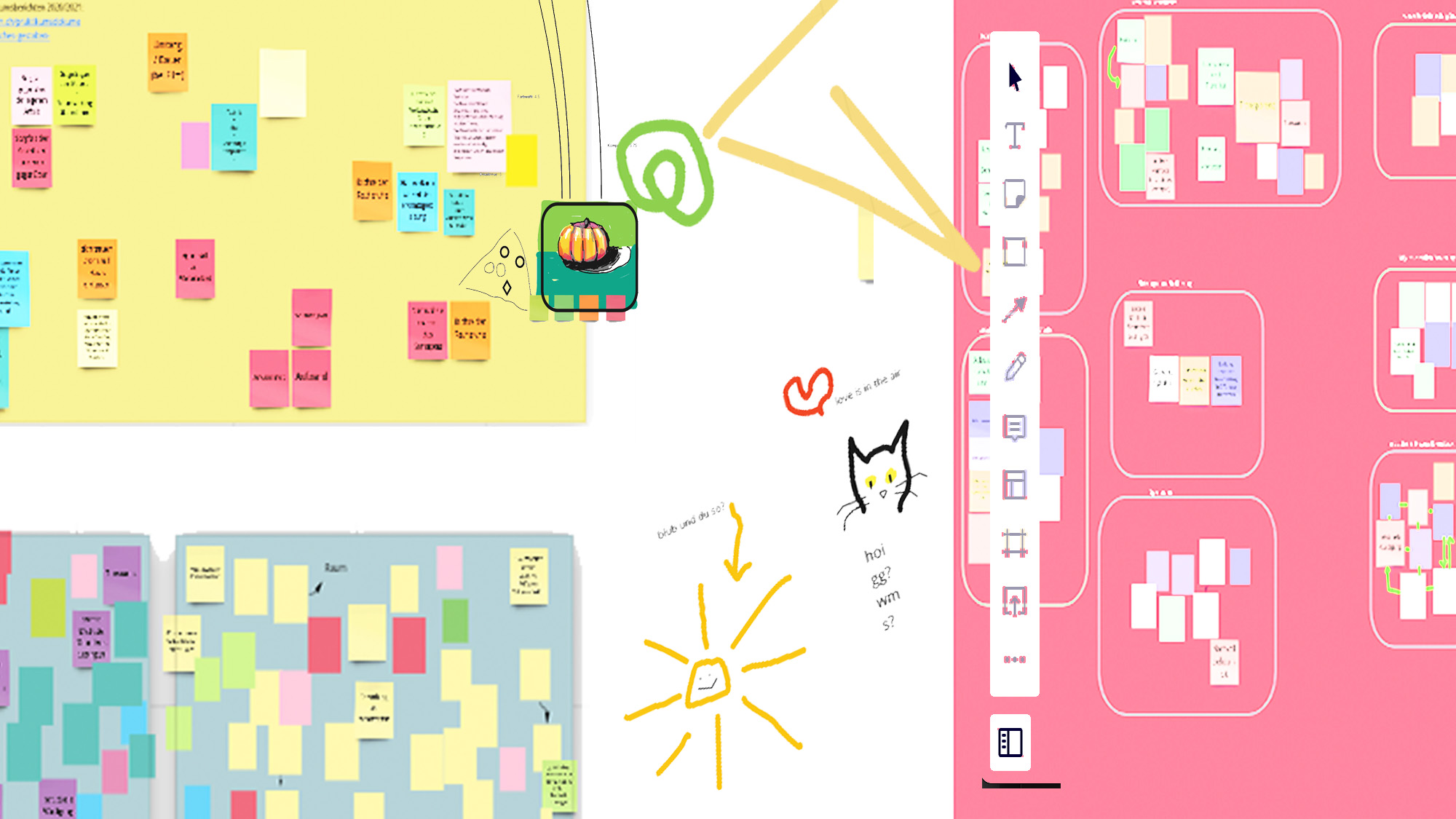
Sticky note cluster discussion
Sticky note cluster discussion(silent)
This micro-assignment aims to make as many voices, thoughts and ideas as possible visible during a seminar. Considering the difficulty of holding lively and heated discussions in remote teaching situations, the debate in this exercise is to be held in writing on digital sticky notes. If possible, there should be no talking. Conveniently, the results are immediately saved along with the exercise.
This micro-assignment was generated in home-schooling situations and has proven to be useful for that. It is certainly transferable to classroom situations.
Description
When works of art, texts, or current topics are discussed in teaching situations, a wide range of opinions, thoughts, views and interpretations arise that can only be fully articulated in the best imaginable scenarios. The barriers to speaking up and disagreeing in remote educational settings seem even higher. The organizer’s moderation skills appear to be in even greater demand to allow as many participants as possible to have their voices heard.
This micro-assignment uses remote schooling tools such as Miro to counteract this situation productively. The idea could not be more straightforward: Within a predefined “frame”, participants are asked to write down aspects and concepts that are important to them about specific topics, questions, or conversation starters on sticky notes while simultaneously responding to each other. This happens silently. Not speaking does not represent a restriction here but instead produces a mood of collective curiosity and concentration.
The concepts that emerge here (often, even unsolicited drawings emerge) can be collectively clustered in additional frames to determine discussion topics for further work, again silently. Through the written form, thoughts are not only produced but also documented and can be taken up again in subsequent sessions.
Tasks and specific work steps
- The teacher, organizer, or workshop leader sets up a Miro board with at least two frames of the same size and different colors. The different colors are for orientation only. The link is sent to all participants. The basis can be any text, work of art, exhibition, theme etc., depending on the subject of the course.
- A1:
The participants are asked to post all words that come to their minds about the text, artwork, exhibition, or topic. e.g., each on a sticky note, without speaking. Depending on the subject, I would plan about 10 to 15 minutes for this.
- A2:
The participants are asked to cluster the sticky notes in the second frame without speaking. It is recommended not to simply drag the sticky notes into the second frame but to copy them, as some notes fit into several clusters. In addition, copying allows you to follow the process. I would schedule 10 to 15 minutes for this.
- A3:
In the third step, headings for the discovered clusters are created in a discussion. This is done in plenary.
Images/Examples

Mirocluster 3 © 2021 by Annemarie Hahn is licensed under CC BY-NC-SA 4.0
Additional Information
Author’s Encouragement
Teachers should try this out because Sticky note cluster discussion (silent) enables them to hear or read the voices of students who are uncomfortable with speaking.
Although the method is designed for distance learning, it can easily be transferred to classroom situations or hybrid teaching. And it hardly requires any time for preparation.
Prior Knowledge and Preparation
The teacher should become familiar with the tool Miro, or another tool on which digital post-its can be placed. It is an advantage if the participants are also familiar with the tool they are using.